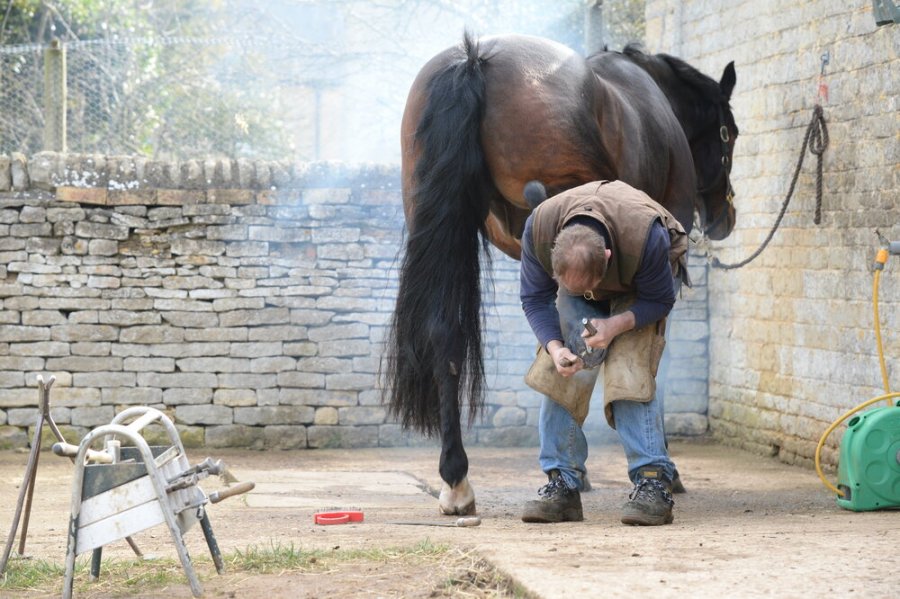We discuss remedial shoeing and Thoroughbred hooves with farrier Glyn Trundle.
Glyn is a master farrier and liveryman of the Worshipful Company of Farriers. He runs Equity Shoeing Ltd, which has a client base in all disciplines, from pro eventers to barefoot ponies.
Could remedial shoeing help an asymmetrical horse?
In short, yes. I’ve been working on similar cases with an equine physio recently and we’ve used a system called Equinosis Q – Lameness Locator to measure the degree of lameness.
It involves attaching a hood supporting a laser to the horse’s head. This then connects to a computer and shows us detailed analysis of the horse’s movement.
We found that horses with a dropped/lower pelvis had a push-off lameness in that hindlimb, and quite often an impact lameness on the diagonal front limb.
Adding a 3mm pad to the shoe on the ‘dropped’ side resulted in both the hind and front limb lameness improving dramatically.
We use a pad rather than a thicker shoe so as not to create a weight issue. Hopefully with correct strengthening rehabilitation in the school, the horse should become less one-sided.
What hoof health red flags should horse owners look out for when buying a new horse – particularly a Thoroughbred?
Buying a Thoroughbred always needs careful consideration. Unfortunately, race-bred Thoroughbreds are bred for a very specific task and that doesn’t necessarily involve longevity.
That said, Thoroughbreds come in a vast range of shapes and sizes, and generally the bigger-boned, chunkier ones have better feet.
When looking at a potential new horse, try to be objective and realistic about his foot and lower leg conformation. Low heels and brittle hooves are the main downfalls.
The heel height from the coronet band to the ground should be approximately one third of the toe height.
If it’s less than this, there’s a greater chance that you’ll experience difficulties with soundness and shoe retention.
Long, sloping pasterns also have a detrimental impact on hoof conformation as they overload the already potentially weak heels.
If you’re feeling unsure, ask your farrier if you can send him some photos of your potential new buy’s feet and if he would be able to give you feedback on whether they are feet he can maintain or improve.
Be prepared to be on a four- to five-week shoeing cycle if the horse’s feet are poor.
Don’t miss the latest issue of Your Horse Magazine, jam-packed with training and veterinary advice, horse-care tips and the latest equestrian products available on shop shelves, on sale now.










